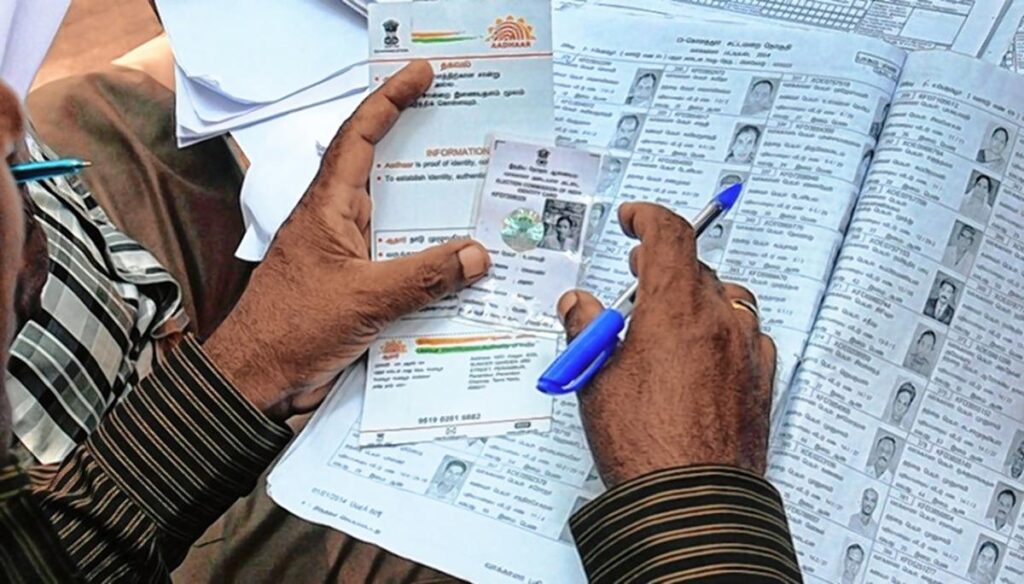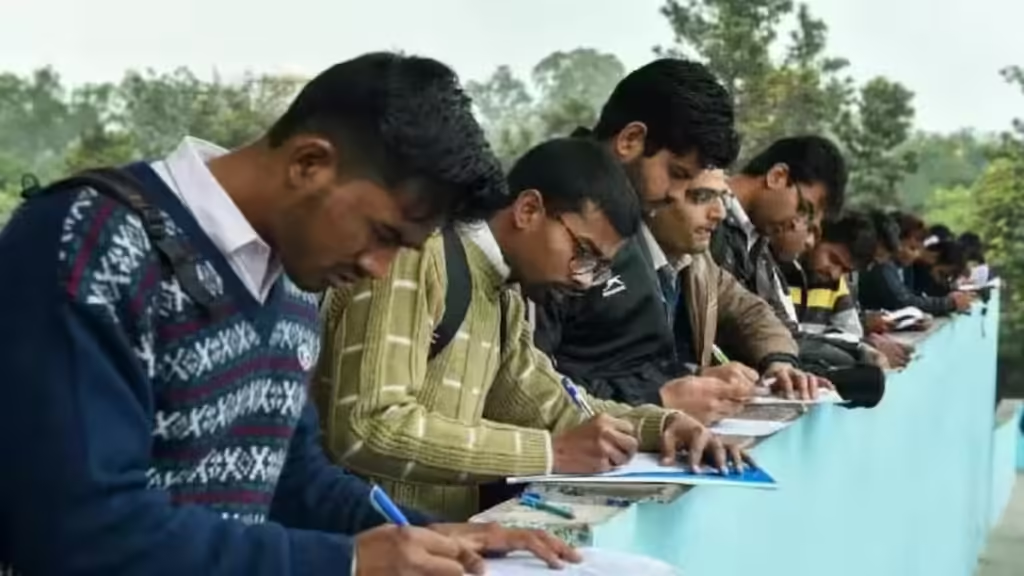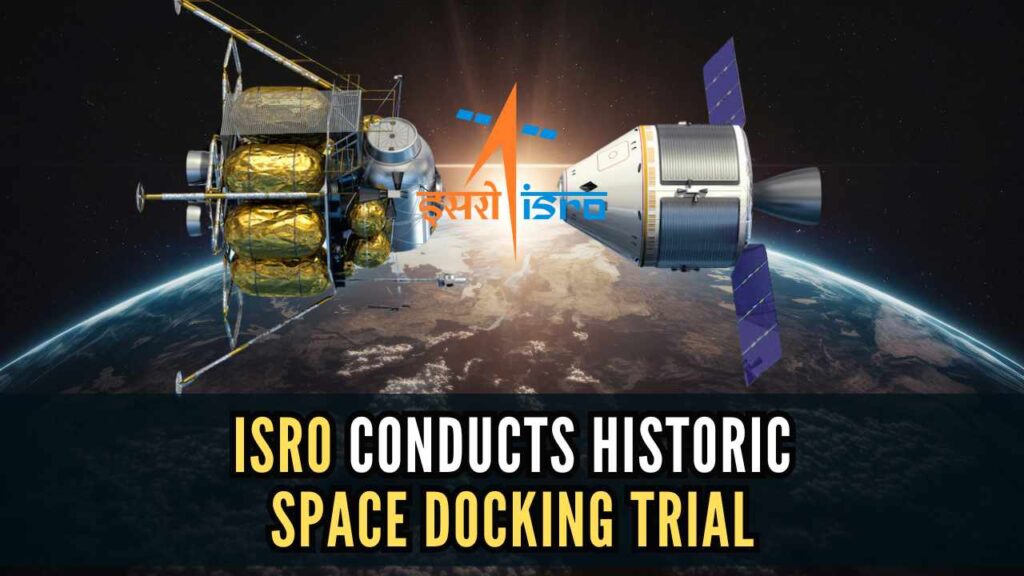Should voter IDs be linked with Aadhaar? | Explained
Source: The Hindu
Syllabus: GS II Polity and Governance
Should Voter IDs Be Linked with Aadhaar?
Introduction
The debate surrounding the linkage of Voter IDs (EPIC) with Aadhaar has gained renewed momentum amidst allegations of electoral roll manipulation. Political parties, such as the Aam Aadmi Party (AAP) and Bharatiya Janata Party (BJP), have accused each other of voter list tampering, especially ahead of crucial elections like those in Delhi. This issue highlights the potential benefits and challenges of linking Voter IDs with Aadhaar, warranting a critical evaluation.

Historical Context
Initial Steps (2015): The Election Commission (EC) launched the National Electoral Rolls Purification and Authentication Program (NERPAP) in 2015 to address issues of duplicate voter entries. This program aimed to authenticate voter data by linking EPIC with Aadhaar. In just three months, over 300 million voters were linked.
Supreme Court Intervention (2015): The initiative was halted following a Supreme Court ruling restricting Aadhaar’s mandatory use to welfare schemes and PAN linking.
Revival (Post-2018): The landmark Puttaswamy judgment upheld the constitutional validity of Aadhaar while emphasizing privacy protections. Consequently, the Representation of the People Act, 1950, was amended in 2021, permitting the voluntary linkage of Voter IDs with Aadhaar.
Current Process
Submission Requirements:
- New Voters: Aadhaar can be submitted during registration via Form 6.
- Existing Voters: Authentication can be done using Form 6B.
- Alternative Documentation: If Aadhaar is unavailable, voters can submit documents like PAN cards, driving licenses, or passports.
Voluntary Nature: The EC clarified in 2023 that Aadhaar linkage is not mandatory and assured that no voter would be excluded for failing to provide Aadhaar. However, outdated forms continue to cause confusion among voters.
Advantages of Linking Aadhaar with Voter IDs
Elimination of Duplicate Entries: Linking Aadhaar with Voter IDs can reduce fraudulent and duplicate entries, ensuring cleaner and more accurate electoral rolls. To date, over 650 million Aadhaar numbers have been linked to voter records.
Enhanced Electoral Integrity: Accurate voter data can minimize impersonation and strengthen the credibility of elections, thereby bolstering trust in the democratic process.
Administrative Efficiency: A streamlined voter database can simplify administrative processes, reducing logistical challenges during elections and ensuring efficient resource allocation.
Challenges and Way Forward
Errors in the Aadhaar Database: Even minor inaccuracies in Aadhaar data could lead to wrongful deletion or rejection of legitimate voter entries, disenfranchising citizens.
Citizenship Verification: Since Aadhaar is a proof of residence and not citizenship, its linkage with Voter IDs does not address the issue of non-citizens being listed in electoral rolls. Independent citizenship verification measures are necessary.
Privacy and Data Security Risks: Electoral rolls are widely circulated among political parties. Linking Aadhaar with Voter IDs may expose sensitive personal data to potential misuse, even if the linkage remains backend-only.
Public Misconceptions: There is widespread apprehension among voters that Aadhaar linkage might compromise the secrecy of their votes, undermining confidence in the electoral system.
Way Forward
Transparent Communication: The Election Commission must launch awareness campaigns to educate voters about the voluntary nature of Aadhaar linkage, its benefits, and safeguards for ensuring data security and voter secrecy.
Form Updates: Urgent revision of outdated forms to explicitly state the voluntary nature of Aadhaar submission is crucial to mitigate voter confusion.
Strengthened Data Security: Robust mechanisms must be established to protect Aadhaar-linked electoral data, addressing concerns over privacy and misuse.
Independent Citizenship Verification: To ensure only citizens are listed on electoral rolls, the EC should develop separate measures to verify citizenship independently of Aadhaar linkage.
Conclusion
The linkage of Voter IDs with Aadhaar holds immense potential to enhance the integrity of India’s electoral process by eliminating duplicate entries and ensuring accurate voter records. However, its implementation must be carefully calibrated to address concerns regarding privacy, data accuracy, and voter confidence. A transparent, secure, and citizen-centric approach will be pivotal in upholding the sanctity of elections, which form the bedrock of India’s democracy.
Kumbh Mela, explained: Its mythology, history, astrology, and why millions flock to it
Source: The Indian Express
Syllabus: GS I Indian culture
Kumbh Mela 2025: A Spiritual Gathering and Its National Significance
Introduction
The Maha Kumbh 2025, a grand spiritual congregation held every 12 years, will commence in Prayagraj on January 13, with the first holy bath (snan). Expected to draw over 450 million devotees over six weeks, the Kumbh Mela stands as one of the largest human gatherings on Earth. While its precise origins remain debated—traced by some to Vedic texts and others to more recent historical developments—its cultural, spiritual, and socio-political significance is undeniable.
The Kumbh Mela
Origin
The term “kumbh”, meaning pitcher or pot in Sanskrit, traces its mythology to the Samudra Manthan (churning of the ocean) by Devas (gods) and Asuras (demons). During this event, Dhanvantri emerged with a pitcher of amrita (nectar of immortality). To safeguard the nectar from the Asuras, Jayant, the son of Indra, fled with the pot under the protection of celestial bodies—the Sun, Shani (Saturn), Brihaspati (Jupiter), and the Moon. During his journey of 12 divine days (equivalent to 12 human years), drops of amrita spilled at four locations: Haridwar, Prayagraj, Ujjain, and Nashik-Trimbakeshwar. These sites host the Kumbh Mela, based on the celestial alignment of the Sun, Moon, and Jupiter.

Frequency and Locations
- Maha Kumbh (Poorna Kumbh): Held every 12 years.
- Ardh Kumbh: Held every 6 years in Haridwar and Prayagraj.
The festivals are celebrated on the banks of sacred rivers:
- Haridwar: Ganga.
- Prayagraj: Confluence of Ganga, Yamuna, and the mythical Saraswati.
- Ujjain: Kshipra, believed to emerge from Lord Vishnu’s heart in his Varaha avatar.
- Nashik-Trimbakeshwar: Godavari, regarded as the Ganga of the South.
Bathing in these rivers during Kumbh, under specific celestial alignments, is believed to cleanse sins and confer spiritual merit (punya).
Spiritual and Social Gathering
The Kumbh Mela attracts millions of devotees, including sadhus and saints from various akhadas, providing a platform for spiritual discourse and cultural exchange. It represents a confluence of diverse religious practices and traditions.
Astrological Basis of Kumbh Mela
The timing and location of Kumbh Mela are determined by astrological calculations. Jupiter’s 12-year revolution around the Sun explains the periodicity of the festival. The unique alignment of Jupiter, the Sun, and the Moon dictates the site of each Kumbh.
Historical References to Kumbh Mela
Ancient Texts and Mythology
- The Skanda Purana mentions riverbank rituals but does not explicitly describe the Kumbh Mela.
- The story of Samudra Manthan, while present in various scriptures, lacks direct references to the spilling of amrita at the four sites.
- Some interpretations of the Rig Veda highlight the spiritual benefits of participating in mass gatherings like the Kumbh Mela.
Xuanzang’s Account
The 7th-century Chinese pilgrim Xuanzang described a grand bathing festival in Prayag, though it is uncertain if this was the Kumbh Mela. Historians like Kama Maclean argue that the Magh Mela, an ancient bathing festival at Prayag, was rebranded as the Kumbh Mela after 1857 to resist British interference.
Role of Adi Shankaracharya
The 8th-century philosopher Adi Shankaracharya is credited with formalizing Hindu congregational practices, including periodic fairs, to foster spiritual learning and unity among ascetics.
Evolution of the Kumbh Mela
The Kumbh Mela likely began in Haridwar, linked to Brihaspati’s (Jupiter) presence in Kumbh Rashi. The Bhakti movement (12th century CE) further popularized the tradition of fairs at sacred riverbanks. Mughal records and the sanyasi akhadas’ documentation indicate its gradual formalization into a socio-religious event of national significance.
Kumbh Mela and Nationalism
Allahabad’s Emergence as a Cultural Hub
Post the 1857 revolt, Allahabad (Prayagraj) gained prominence as the administrative capital of the North-Western Provinces. With institutions like the Allahabad High Court (1867) and Allahabad University (1887), it became a political and intellectual center. This environment fostered the integration of religious festivals like the Kumbh Mela with nationalist movements.
Religious Festivals as Political Platforms
From the late 19th century, nationalist leaders recognized the Kumbh Mela’s potential for mass mobilization. Leveraging the British policy of non-interference in religion, leaders like Bal Gangadhar Tilak and Gopal Krishna Gokhale used the Mela to propagate Swadeshi and nationalist ideologies. By blending religious authority with political messaging, they fostered a sense of unity and resistance against colonial rule.
Role of Congress and Ascetics
By the 1930s, the Congress Party actively engaged with Kumbh Melas to disseminate nationalist ideas. Religious leaders and ascetics, revered for their spiritual authority, amplified these messages. Iconic events, like the display of Bharat Mata’s idol during the 1936 Ardh Kumbh, symbolized the fusion of spiritual and nationalist sentiments.
Conclusion
The Kumbh Mela epitomizes the confluence of spirituality, culture, and socio-political relevance. From its mythological origins to its evolution into a platform for nationalist mobilization, the festival reflects India’s rich heritage and resilience. As a monumental event, it continues to symbolize unity, cultural diversity, and the enduring strength of India’s democratic and spiritual traditions.
What are UGC’s new draft rules on Vice-Chancellor appointments and why are states upset?
Source: The Indian Express
Syllabus: GS II Polity and Governance
Why in News?
The University Grants Commission (UGC) has proposed new regulations for appointing Vice Chancellors (VCs) in universities, sparking disputes between states and the Centre over autonomy and federal principles.
New Regulations for Appointing VCs in Universities
- Name: The draft UGC (Minimum Qualifications for Appointment and Promotion of Teachers and Academic Staff in Universities and Colleges and Measures for the Maintenance of Standards in Higher Education) Regulations, 2025.
- Objective: The regulations aim to standardize the VC appointment process but face criticism for potentially infringing on state autonomy and undermining federalism.
How VCs are Appointed?
Central Universities:
- Central universities, established by parliamentary Acts, are governed by the Centre, with the President of India serving as the Visitor.
- VC appointment committees include two nominees from the university’s Executive Council and one from the Visitor.
State Universities:
- State-specific laws govern VC appointments, often determining the composition of search committees.
- Typically, the Chancellor (usually the Governor) appoints the VC based on committee recommendations.
- Example: Kerala’s process involves nominees from the university Senate, the UGC Chairman, and the Chancellor.

Private Universities:
- Private institutions follow similar procedures, with limited UGC involvement through its nominee in the search committee.
Key Provisions of the Draft Regulations 2025
- Committee Composition Changes:
- The search-cum-selection committee will comprise three members:
- One nominee each from the Chancellor/Visitor, the UGC Chairman, and the university’s apex body (e.g., Senate or Syndicate).
- This change grants Centre-aligned nominees a majority in the committee.
- The search-cum-selection committee will comprise three members:
- Expanded Eligibility:
- Individuals from senior roles in industries, public policy, administration, or public sector undertakings, in addition to professors, may now qualify as VCs.
- Chancellor’s Role:
- The Chancellor or Visitor will directly constitute the search committee, deviating from the 2018 guidelines.
State vs Centre Disputes over VC Appointments
Kerala:
- Disputes began in 2021 when Governor Arif Mohammad Khan contested VC reappointments.
- The state legislature passed a Bill to replace the Governor as Chancellor, awaiting Presidential assent.
West Bengal:
- The Supreme Court is adjudicating disputes over interim VC appointments made unilaterally by the Governor.
- A proposal to replace the Governor with the Chief Minister as Chancellor is stalled.
Karnataka:
- Legislative reforms aim to remove the Governor as Chancellor, but Bills are awaiting approval.
Maharashtra:
- Efforts to limit the Governor’s role in VC appointments were reversed under a new government in 2022.
Tamil Nadu:
- The DMK government’s attempts to appoint VCs without Governor approval remain blocked.
Federalism Concerns over VC Appointments
State governments have raised several concerns:
- Erosion of State Autonomy:
- States argue that the regulations centralize power with Governors, undermining the federal structure.
- Democratic Concerns:
- Critics see the regulations as weakening democratically elected state governments.
State Leaders’ Reactions:
- Kerala CM Pinarayi Vijayan: Called the draft regulations “anti-federal” and an overreach into state rights.
- Tamil Nadu CM M K Stalin: Termed it a “direct assault on federalism.”
UGC’s Stance:
- UGC Chairman M Jagadesh Kumar defended the reforms, emphasizing alignment with the National Education Policy (NEP) 2020 and the need for transparent, high-quality leadership in higher education.
Conclusion
The proposed UGC regulations have intensified Centre-state tensions, particularly over Governors’ roles in university governance. While the Centre justifies these changes as essential for ensuring leadership quality and aligning with the NEP 2020, state governments view them as a threat to their autonomy and the federal balance.
Resolving these disputes will be pivotal for the future of higher education governance and the broader dynamics of Centre-state relations in India.
Docking trial: ISRO succeeds in nudging two satellites closer
Source: The Hindu
ISRO’s Successful Docking Trial: Advancing Space Technologies
Source: The Hindu
Syllabus: GS III Science and Technology
Introduction
The Indian Space Research Organisation (ISRO) achieved a significant milestone in its pursuit of advanced space technologies by conducting a trial docking experiment under the SPaDeX (Space Docking Experiment) mission. This development marks a critical step toward enhancing India’s capability in spacecraft rendezvous, docking, and undocking—key technologies for future space exploration and station-building missions.

Details of the Docking Trial
Mission Overview
- Launch Vehicle: The SPaDeX mission satellites—SDX01 (Chaser) and SDX02 (Target)—were launched aboard the PSLV-C60 rocket on December 30, 2024, from the Satish Dhawan Space Centre, Sriharikota.
- Objective: The mission aims to demonstrate autonomous spacecraft docking capabilities, a first for ISRO and a vital precursor to complex future missions.
Trial Process
- On January 12, 2025, the satellites were successfully brought to within 3 meters of each other, a critical phase in the docking process.
- The trial included a controlled retreat to a safe distance after achieving the proximity milestone.
- The docking attempt followed a setback caused by an unexpected drift between the satellites on January 7, delaying the original schedule. ISRO later rectified the drift, enabling progress in the trial.
ISRO’s Statement
- ISRO highlighted the progress via updates on social media platform X, stating:
- “At 15 meters, we see each other clearer and clearer. We are just 50 feet away for an exciting handshake.”
- Data from this trial will be analyzed to refine future docking attempts.
Significance of Docking Technology
Strategic and Scientific Relevance
- Spacecraft Rendezvous and Docking: These technologies are critical for enabling operations like astronaut transfer, spacecraft repair, and orbital refueling.
- Futuristic Missions: The successful demonstration of this capability is essential for India’s:
- Human spaceflight programs (e.g., Gaganyaan, lunar missions).
- Sample return missions from extraterrestrial bodies like the Moon.
- Indian space station construction and operations.
Global Context
- If ISRO successfully achieves autonomous docking, India will join an elite group of nations—the United States, Russia, and China—that have mastered this advanced space technology.
Challenges Overcome
- The unexpected drift between the satellites posed a significant challenge, leading to the postponement of the initial docking attempt.
- ISRO’s ability to address and stabilize the drift showcases its growing expertise in real-time problem-solving and mission adaptability.
Conclusion
ISRO’s progress in the SPaDeX mission underscores India’s growing prominence in space technology and exploration. The trial not only demonstrates India’s strides in developing autonomous spacecraft docking capabilities but also lays the groundwork for more ambitious missions, including human spaceflight and the establishment of an Indian space station. This achievement represents a critical step in enhancing India’s self-reliance in space and contributing to global advancements in space exploration.